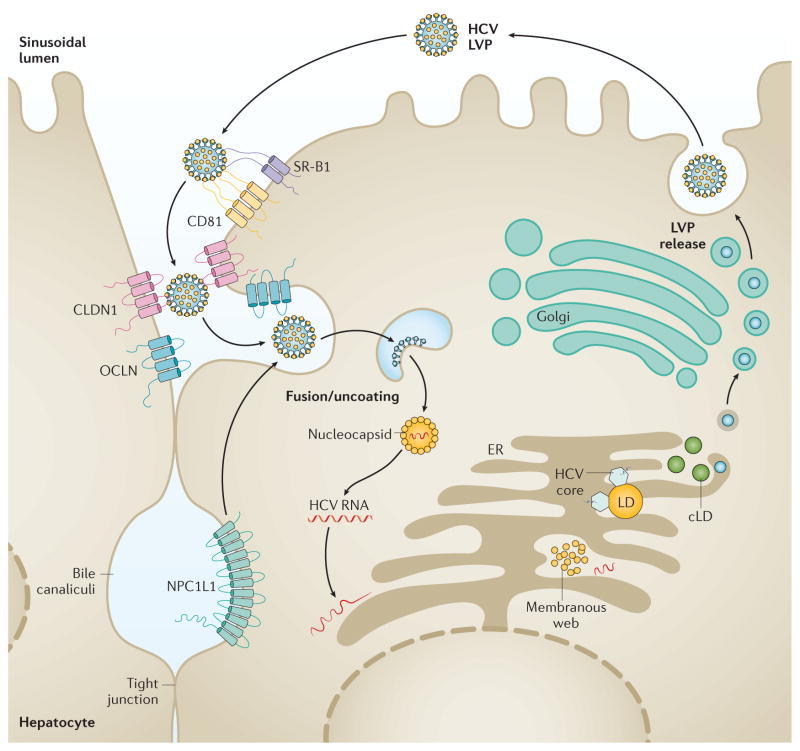Figure 2. HCV biology.
The life cycle of HCV, including attachment, entry, uncoating, encapsidation and secretion, is depicted. Interaction of extracellular HCV with cellular surface receptors initiates the entry process, which can also occur from direct cell-to-cell transmission. After pH-dependent fusion and uncoating, the incoming HCV genome is translated and the resulting polyprotein processed. Replication takes place in ER-derived membrane spherules (membranous web). In the assembly and secretion release process, the core protein is transferred from the lipid droplets to form nucleocapsids that, assisted by NS5A, are loaded with RNA. The replicase proteins can bind to the HCV genomic RNA during transfer from replication to packaging in close proximity, but eventually are removed from the maturing nucleocapsids, the intracellular sites of which might converge. HCV virion morphogenesis is coupled to the VLDL pathway, and particles are produced as lipoviral particles (LVPs). CLDN1, claudin-1; cLD, cytoplasmic lipid droplets; ER, endoplasmic reticulum; LD, lipid droplets; NPC1L1, Niemann-Pick C1-like protein 1; OCLN, occludin; SR-B1, scavenger receptor class B member 1. Adapted with permission from Nature Publishing Group © Scheel, T. K. H. & Rice, C. M. Nat. Med, 19, 837–849 (2013).

